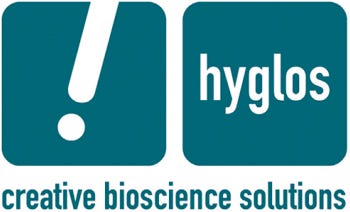A New Solution for Endotoxin Removal in Biomanufacturing ProcessesA New Solution for Endotoxin Removal in Biomanufacturing Processes

EndoTrap HD® manufactured by Hyglos GmbH (former Profos AG) is a new revolutionary tool especially designed to meet the needs of pharma and biotech industry for the efficient removal of endotoxins in biomanufacturing processes. EndoTrap® HD fulfils all requirements for industrial applications, and it can easily be integrated in/at early or late-stage purification processes of biological substances such as proteins, drugs, antibodies, or vaccines.
Background
Endotoxins (lipopolysaccharides, LPS) are major contaminants found in commercially available proteins or biologically active substances. LPS are highly potent immune stimulators able to cause side effects in host organisms such as endotoxin shock, tissue injury, and even death. Due to these reactions, it is essential to remove LPS from injectable drugs and other biological as well as pharmaceutical products (1, 2).
Purification very often represents the most time consuming and cost intensive step of the whole production process. Therefore optimization of the downstream process is essential in order to achieve time and cost efficiency (3). Generally, high LPS concentrations can be reduced to about 100 EU/mL without special treatment, but many applications require an even lower-limit value as described within the pharmacopoeia — e.g., 5 endotoxin units (1 EU ≈ 100 pg) per kilogram of body weight per hour for intravenous applications.
New Solution for Endotoxin Removal
Reducing the LPS level to <1 ng/mg (10 EU/mg) is a very difficult task, particularly without a significant loss of target substance. Frequently, LPS removal (e.g., from protein solutions) is insufficient with non–LPS-specific standard methods such as ultrafiltration (disadvantage: not suitable for large proteins), ion-exchange chromatography (disadvantages: possibly high loss of protein due to negatively charged proteins; reduced LPS removal efficiency due to positively charged proteins, two-phase extraction (disadvantage: traces of detergents interfere with high-resolution mass spectrometry, interact with eukaryotic cell membranes and have toxic effects). Only methods with the highest LPS removal capacity combined with excellent recovery rates of the target substances are acceptable. EndoTrap® HD meets all these specific requirements, and is highly suitable as a final polishing step to remove all remaining LPS contaminations.
EndoTrap® HD Features
Highly specific and efficient LPS capture from complex mixtures
Average sample/protein recovery >95%
Compatible with commonly used buffer additives and high-salt conditions
Excellent chromatographic characteristics (reusable 10 times)
Low ligand leakage (comparable to leakage of protein A from purification columns)
Ligand leakage monitoring with Hyglos Leakage ELISA
Available Regulatory Support File (RSF); neither cytotoxic nor immunomodulatory effects of the EndoTrap® HD components were observed.
About Hyglos GmbH
Hyglos’ core competency is to exploit the principles of bacteriophage biology and expert use of proprietary phage–protein technology for pharmaceutical, diagnostic, and research applications.
Table 1: Endotoxin removal efficiency from various samples with EndoTrap® HD

Table 1: Endotoxin removal efficiency from various samples with EndoTrap® HD ()
REFERENCES
1.) Magalhães,. 2007. Methods of Endotoxin Removal from Biological Preparations: A Review. J. Pharm. Pharmaceut Sci. 10:388-404.
2.) Moshe, A. Brade, 1999.Endothelial Cell Activation by Lipopolysaccharide: Role of Soluble CD14Endotoxin in Health and Disease, Marcel Dekker, Inc., Basel:423-435.
3.) Bailey, JE, and DF. Ollis. 1986.Biochemical Engineering Fundamentals2nd edition, McGraw-Hill, New York.
You May Also Like






